| Vintage Pulp | Jan 27 2022 |

Tall and tan and young and lovely, and when she betrays them, each one she betrays goes, “Argh...”

This interesting piece of art was sent to us by a friend, Leonardo, and it comes from Brazilian publisher Record for Raymond Chandler's Perolas dao azar. The book comprises three Chandler stories, “Pearls Are a Nuisance,” “Finger Man,” and “The King in Yellow,” plus his crime essay, “The Simple Art of Murder.” If you're an avid reader of old literature, “The King in Yellow,” may sound familiar. It was the name of an 1895 anthology by Robert W. Chambers, the best-selling U.S. author of the latter half of the nineteenth century, and the source of certain motifs used in H.P. Lovecraft's Cthulhu Mythos. Chandler's story isn't supernatural, but it does allude to Chambers' work.
The cover art is by Robert McGinnis and was previously used on Shell Scott's 1971 novel Dig That Crazy Grave. Around then Record began spicing up some of its paperbacks with McGinnis art. We don't know if he was compensated for his work. We've talked about this issue before, but long story short, we just can't see an economic win for Record in buying McGinnis's art. In a country as big as Brazil some artist could have painted a nice cover—and cheaply. Probably more cheaply than licensing art from McGinnis. We don't know how it all worked, so we're not saying Record stole the art, but still, you have to wonder. Thanks for sending this over, Leonardo.
The cover art is by Robert McGinnis and was previously used on Shell Scott's 1971 novel Dig That Crazy Grave. Around then Record began spicing up some of its paperbacks with McGinnis art. We don't know if he was compensated for his work. We've talked about this issue before, but long story short, we just can't see an economic win for Record in buying McGinnis's art. In a country as big as Brazil some artist could have painted a nice cover—and cheaply. Probably more cheaply than licensing art from McGinnis. We don't know how it all worked, so we're not saying Record stole the art, but still, you have to wonder. Thanks for sending this over, Leonardo.
| Vintage Pulp | Jan 27 2022 |

Whoa. This is going to sound incredible, but right now I'm looking at what has to be the biggest bird of all time.
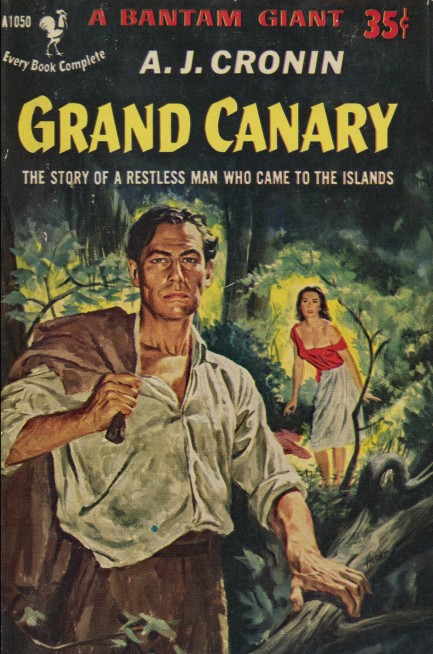
Once again we decided to read a book about someplace we've been. We just enjoy reading descriptions of places from a lifetime ago that we happen to know personally. This time it was the Canary Islands, where we spent time about five years back, depicted in A.J. Cronin's novel Grand Canary. Unfortunately, this tale concerning an assortment of characters on a steamer headed Spainward was a bit of a slog. The cast was too typical: two missionaries, a drunk, a profane older lady, a beautiful young one, a gruff captain, etc. Grand Canary was originally published in 1933, so this idea wasn't a cliché back when Cronin wrote it, but in our view it still doesn't compare well to other books about disparate characters turning up in exotic ports. The main plot involves a broken doctor trying to escape a ruined past who finds himself smack in the middle of a yellow fever outbreak. Chance for redemption? Maybe. The art on this 1952 edition from Bantam is by Mitchell Hooks, and it's excellent.
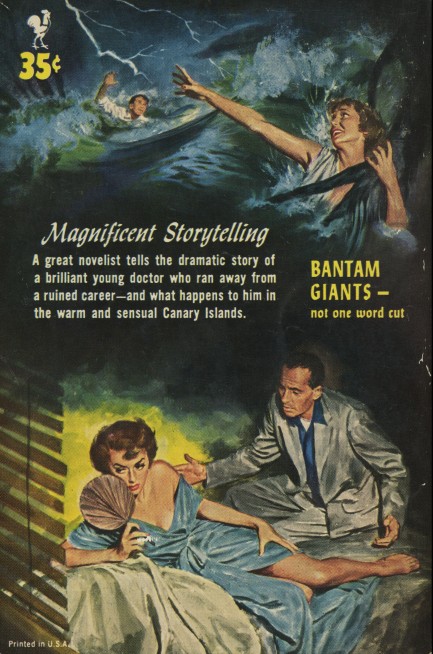
| Femmes Fatales | Jan 27 2022 |

I've shot enough people now that it doesn't really faze me anymore.

Carolyn Jones is known to most people for her turn as Morticia Addams on The Addams Family, but this chilled out photo was made when she was filming the gangster drama Baby Face Nelson in 1957. It wasn't her only crime thriller. She also appeared in The Man Who Knew Too Much, The Man in the Net, and Johnny Trouble. We've actually never seen an episode of The Addams Family, but we knew it was a bit of a cultural phenomenon, and after learning it started as a cartoon in The New Yorker all the way back in 1938, we may have to check it out.
| Hollywoodland | Intl. Notebook | Jan 26 2022 |

The king of tabloids sets its sights on the Queen of Greece.

Every month when Confidential magazine hit newsstands, we imagine Hollywood celebrities receiving the bad news that they'd made the cover, and going, “Shit.” This issue published in January 1964 features Elizabeth Taylor, Richard Burton, Frank Sinatra, and Jill St. John. The first three members of that group probably took the news in stride, since they were all tabloid staples by then. St. John wasn't quite at their level, but her links with Sinatra kept her in the scandal sheets for a while too.
A person who wasn't used to Confidential's attentions was Frederica of Hanover, who at the time was Queen Consort of Greece—which is just a fancy way of saying she was married to the King of Greece. Confidential says she was a Nazi, a pretty serious charge, needless to say. Was she? Well, her grandfather was Kaiser Wilhelm II, as a girl she was a member of Bund Deutscher Mädel, which was a branch of the Hitler Youth, and she had brothers in the SS. Also, back in 1934 Adolf Hitler wanted to link the British and German royal houses, and tried to pressure Frederica's parents into arranging for the seventeen-year-old girl to marry the Prince of Wales, Edward VIII. And as Queen Consort she made a habit of meddling in Greek politics in ways that made clear she was not a fan of democracy. None of that is a particularly good look.
She had defenders, though, who believed that for a person in her position it would have been impossible not to have been a member of certain groups and to have socialized with Nazis. It's interesting, isn't it, how the rich and powerful always benefit from a special set of excuses? People can't really expect her to have made a stand, can they? But the excuse is hollow. As a high ranking royal she could have avoided anything she wished. Membership in organizations when she was a little girl is one thing, but as an adult she could have denounced Nazism with damage to her reputation the only potential result. A damaged reputation is no small thing, but if we expect resistance from people who'd have been imprisoned or shot for doing so, we should probably expect the same from people who would have suffered mostly dirty looks.
Confidential focuses on Frederica's July 1963 visit to England. The visit was no big surprise—Frederica, her husband King Paul of Greece, Queen Elizabeth, and her husband Prince Philip, were all related. They were all direct descendants of Queen Victoria. Monarchy is a funny thing, isn't it? The visit triggered a protest of about three thousand British leftists that was violently broken up by five thousand police. The protestors carried banners that said, “Down with the Nazi Queen.” After mentioning this fiasco, Confidential delves into Frederica's history, some of which we've outlined above, then loops back to the protests, which she blamed on the British press. But she had already reached a level of notoriety that usually brought out protestors who loudly booed her, particularly in Greece. She eventually retreated from public life, became a Buddhist, and died early at age sixty-three.
Confidential's unexpected exposé on Frederica wasn't out of character for the magazine. It was the top tabloid dog in a very large kennel. It had an expansive staff, serious reporters, hundreds of informers spread across the U.S. and Britain, and published stories about heavy hitters from all sectors of society. It had a regressive political agenda, as its article filled with terrible slander against gays and lesbians makes clear, but even with its rightward slant it took pains to keep its reporting framework factual. That makes it a priceless source of contemporaneous info about public figures, particularly of the Hollywood variety. We doubt we'll ever stop buying it, because we never know who we'll find inside. Twenty-plus scans below.
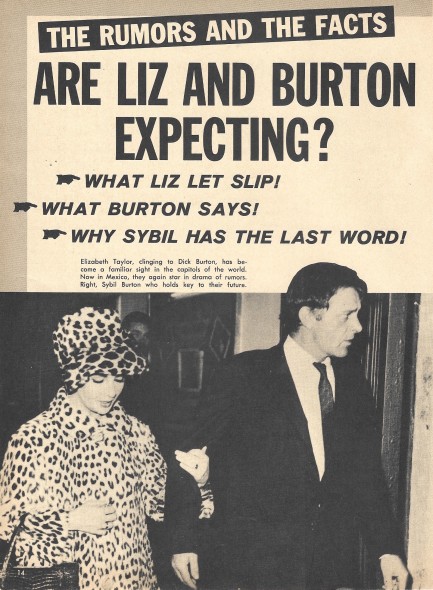
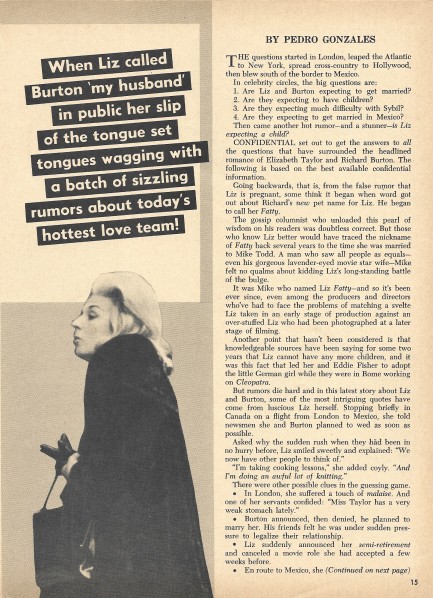
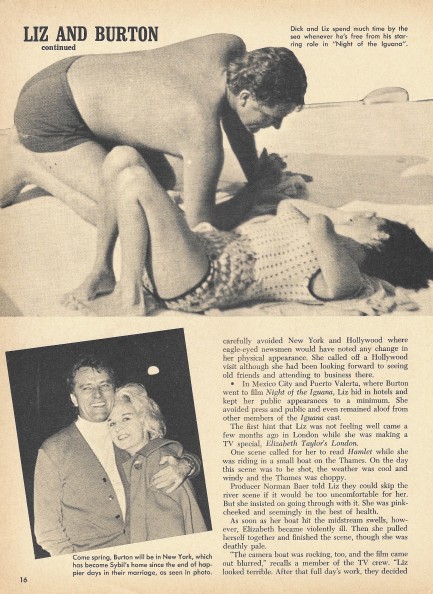
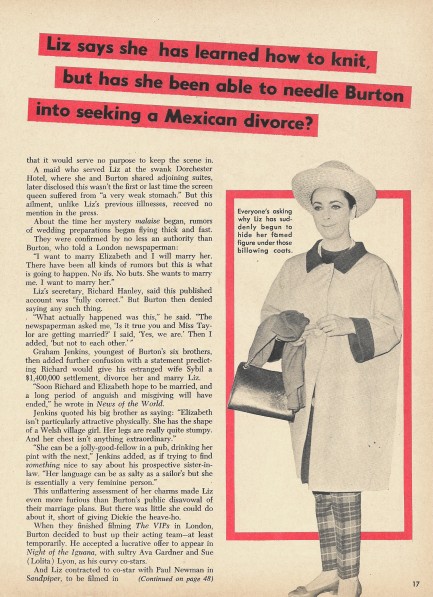



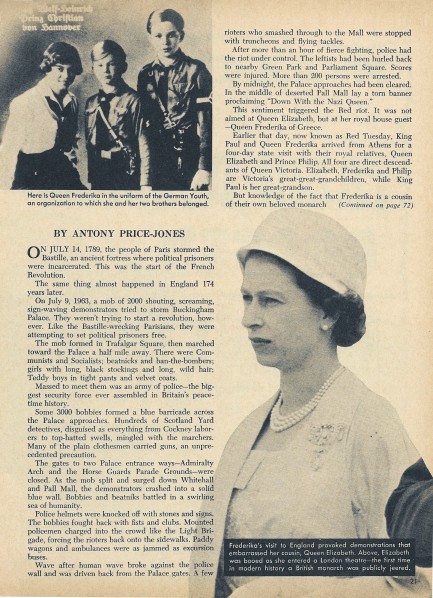

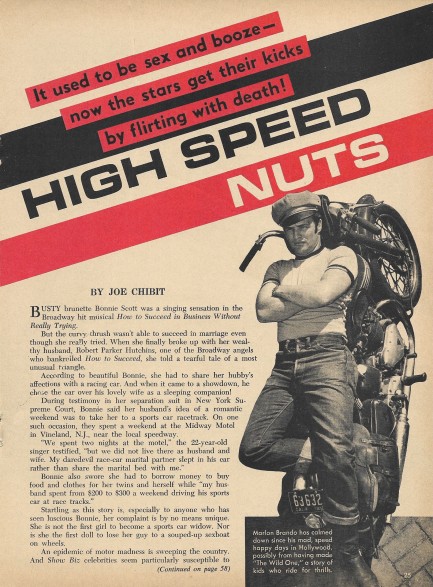
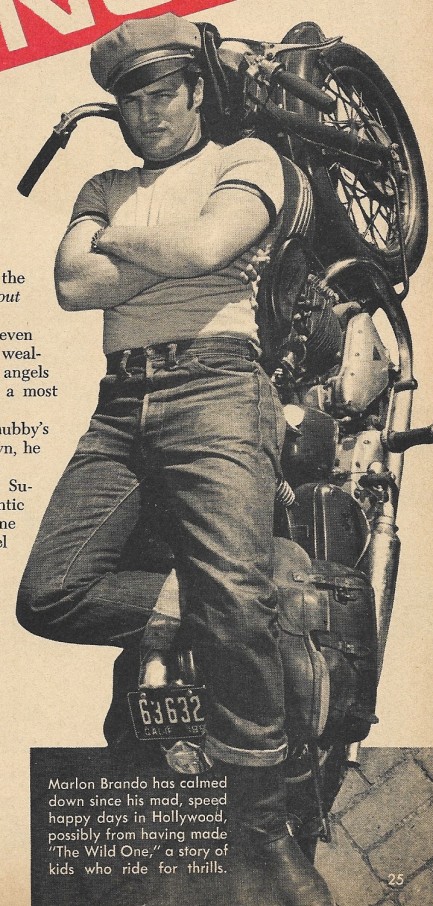
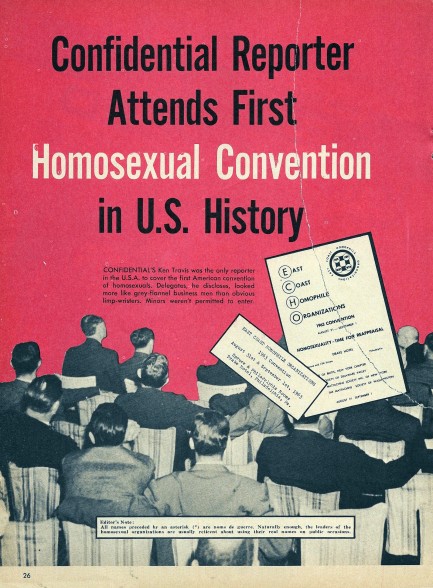

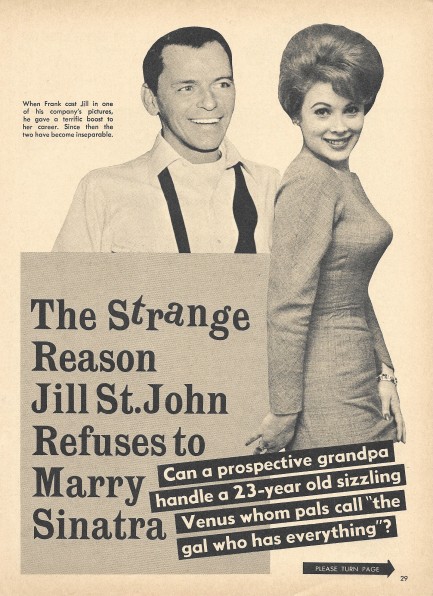
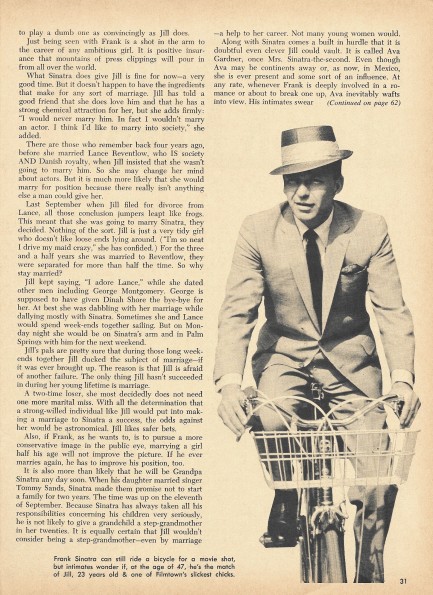
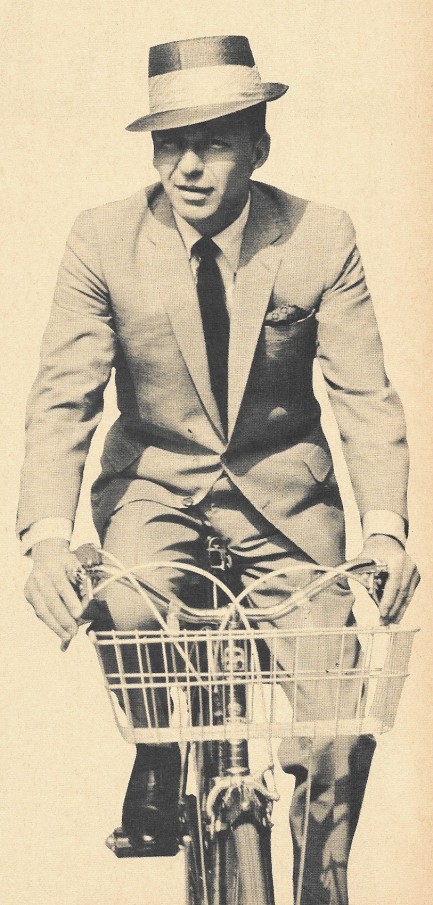
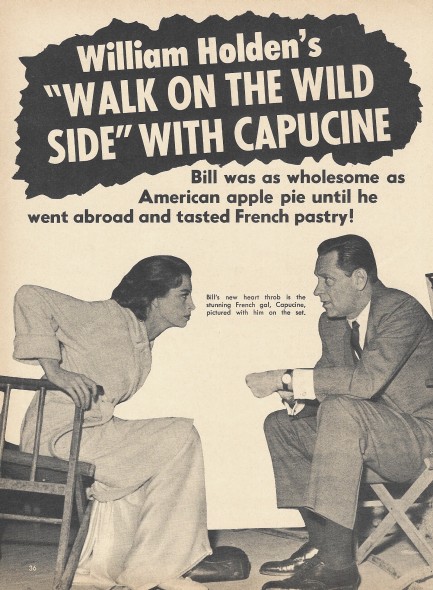
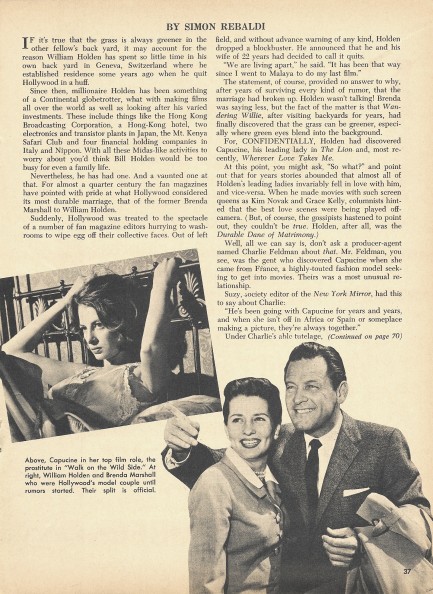

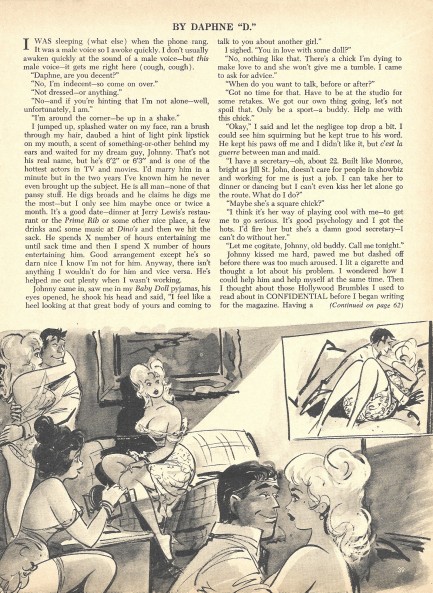

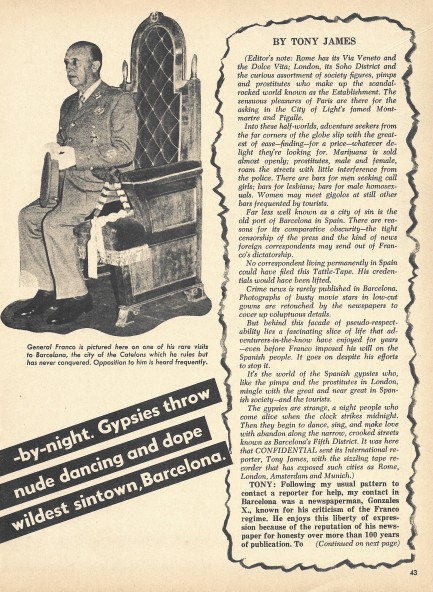
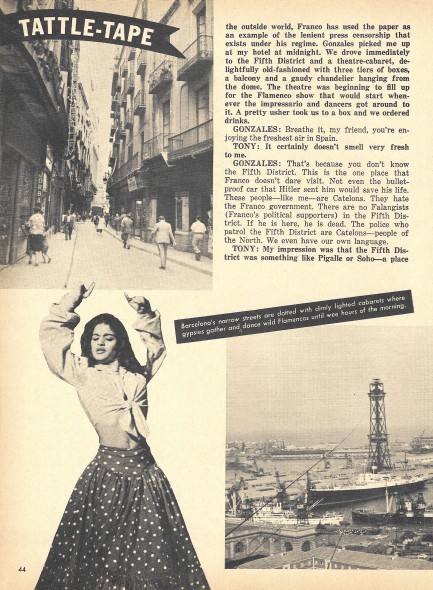























| Vintage Pulp | Jan 25 2022 |

George Raft and Ava Gardner are lost in tepid 1946 drama.
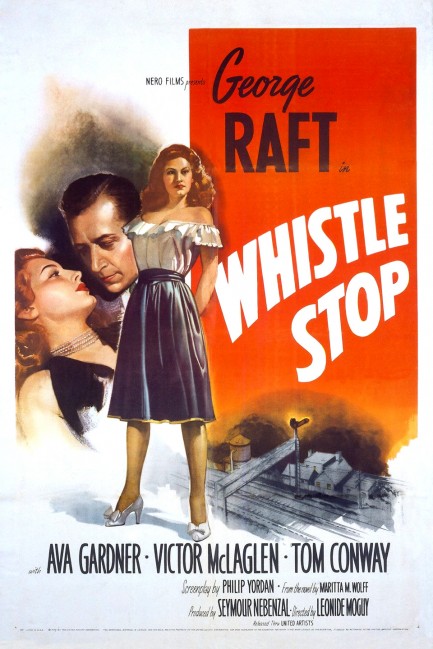
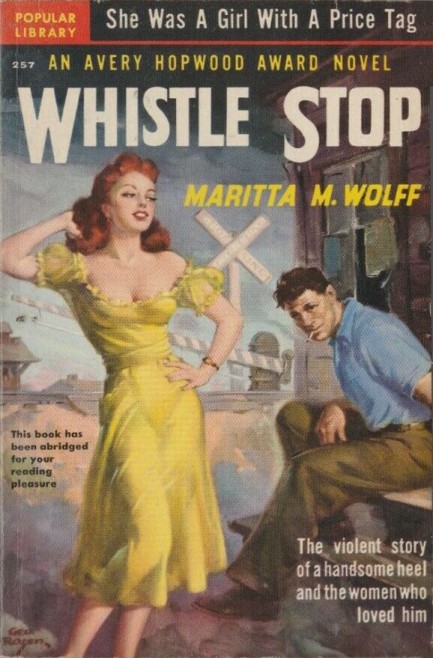 A whistle stop, for any who don't know, is a term for a small town, a place where a train pulls in for a few minutes before moving on. 1946's Whistle Stop is based on Maritta M. Wolff's acclaimed novel, published when she was just twenty-two. It was not only acclaimed, but controversial, as its frank language scandalized bluenoses of the era.
A whistle stop, for any who don't know, is a term for a small town, a place where a train pulls in for a few minutes before moving on. 1946's Whistle Stop is based on Maritta M. Wolff's acclaimed novel, published when she was just twenty-two. It was not only acclaimed, but controversial, as its frank language scandalized bluenoses of the era.In the film, Ava Gardner returns from Chicago to her whistle stop home town and gets tangled up up with her ex, George Raft, who's a gambler and all around shady guy. Tom Conway has feelings for Gardner and hates Raft, and the rivalry leads to big trouble as both try to win Ava's affections. She doesn't help the situation with her fickleness. Each time Raft makes her mad she turns to Conway. Nothing good can result when hearts are used as toys.
This is another one of those old films that, because it has some night scenes and a partial crime focus, is labeled on some sites as a film noir. That's way off and you'll be disappointed if you watch it expecting noir. It's actually a melodrama, with star-crossed lovers, sweet violins, and a dance sequence set to the 1848 folk classic “Oh, Susanna.” Even Variety at the time called it “heavy melodrama.” There's a heist in the film, but heists happened in the movies before, after, and outside film noir. Raft is supposed to take part in the robbery, which as a bonus would result in the death of his rival Conway. Think things work out as planned? Not quite. We wanted to like Whistle Stop, because Gardner is ravishing, but it's not up to the standard of most old films. It premiered today in 1946.


| Vintage Pulp | Jan 24 2022 |

What a perfect day. It's days like this that make me glad we invested early in cryptocurrency and retired before thirty.
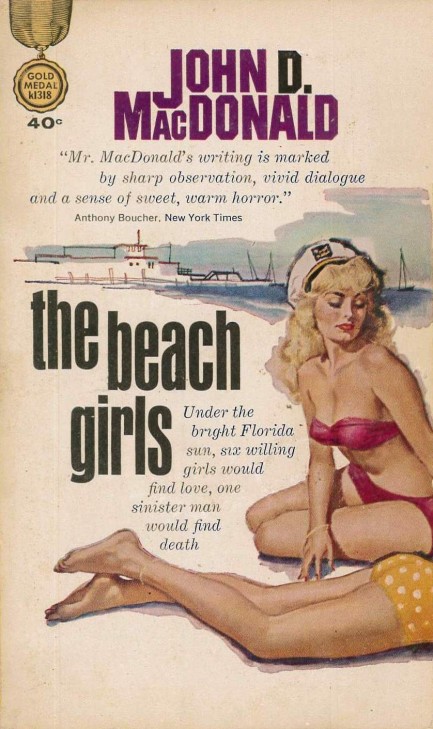
Above is a Charles Binger cover for John D. MacDonald's 1959 novel The Beach Girls. At this point, we know anything he wrote pre-Travis McGee is going to be good, and even the McGee books are mostly entertaining despite the main character's off-putting social judgments. The Beach Girls is a bit different from other MacDonalds we've read, largely written in a sort of round robin style where the final words of each chapter lead mid-sentence into the first words of the next, but with a change in first person point-of-view. The book cycles through numerous characters via this interesting trick before settling into standard third person narration for the finish.
The story deals with the inhabitants of a marina in fictional Elihu Beach, Florida, some of whom are friends, others enemies, some longtime residents, others newcomers, and how jealousy and resentment lead to a shocking act of violence. From the earliest pages you know this event is coming, and as the book wears on you become pretty sure who's going to be the unfortunate though deserving recipient, and who's going to be the giver. The main question becomes whether MacDonald will subvert these expectations and throw readers a curve. We'll just say it wasn't a predictable tale.
The only thing we don't get is why it's called The Beach Girls. The nearby beach area of the town is mentioned only a few times, no scenes are set there, and the book has an ensemble cast, with the women no more important than the men. There are groups of tourist women that pop up here and there, but they don't impact the story at all. Oh well. The title is a mystery, but an unimportant one. We'll get back to MacDonald a bit later. These 1950s efforts of his have been very worthwhile.
| Vintage Pulp | Jan 24 2022 |

When is a terrible movie a must-watch? When it stars Ursula Andress.
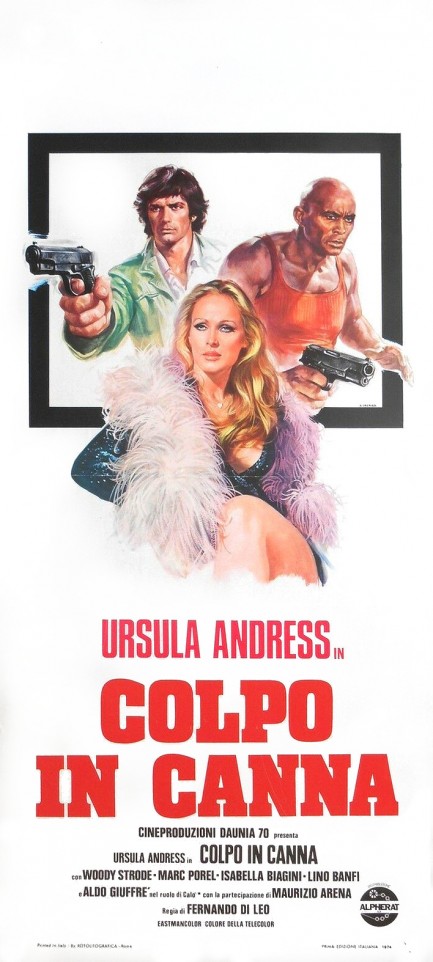
Colpo in canna, for which you see a promo poster above, starred Swiss goddess Ursula Andress during the height of her nudie period, as you'll soon see. She plays a flight attendant paid by a stranger to deliver a note. Sounds legit, right? She has no idea she's delivering this message to criminals. These crooks don't react well. They rough her up and force her to act as bait to find the writer of the note, but she hooks up with a hot circus acrobat who lends a hand—and his bed—as Andress is chased all over Naples by two gangs and the cops.
Crowdsourced sites like IMDB call Colpo in canna an action adventure, which is why we watched it. But it's actually an action comedy, and anything ostensibly comedic from Italy during the 1970s should strike fear into your heart. That fear will be realized, as ludicrous oompah brass music and ragtime numbers accompany pratfall interludes and fights played for laughs. It's torturous.
The only reason to endure this patchwork of stolen Benny Hill routines is for Andress, who most people would be happy to stare at for hours fully clothed, but who here, at thirty-nine years old and looking as breathtaking as ever, has five—or was it six?—nude scenes. In the same way a milkshake is just a delivery system for a sugar high, this film is just a delivery system for an Andress high. She'll leave you dizzy, possibly even stunned. Colpo in canna, which was known in English as Loaded Guns, premiered in Italy today in 1975












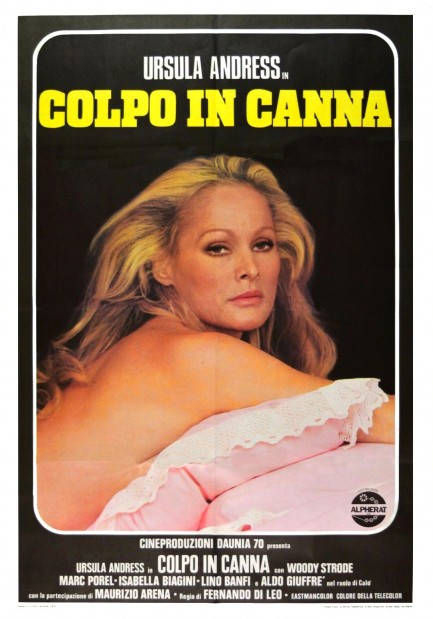
| Femmes Fatales | Jan 23 2022 |

Bartender, give me another. And put a shot of optimism in this one.

Above: a promo shot of Ann Sothern made when she was filming the interestingly named 1942 flick Panama Hattie, which was based on a Broadway production of the same name. She plays a saloon keeper, which is sort of pulp, but it's a musical romance, which ain't pulp. That's probably why she looks so sad.
| Vintage Pulp | Jan 23 2022 |

Damn it feels good to be a gangsta.
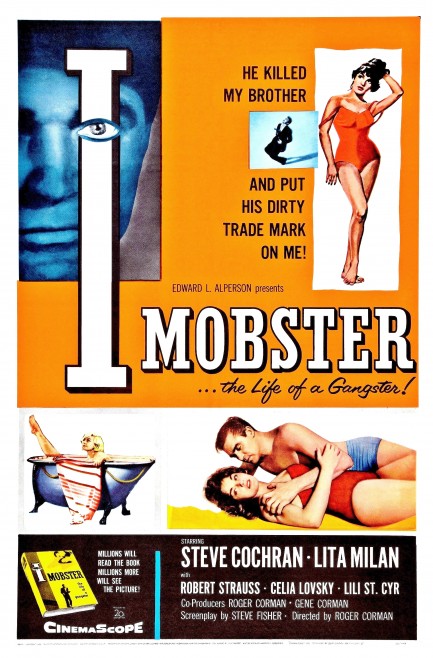
Above you see a U.S. promo poster for the crime drama I, Mobster, starring Steve Cochran in a rags-to-riches, innocence-to-corruption tale of a neighborhood kid who becomes a top man in the mob. The film was based on a 1951 novel of the same name published anonymously, but later identified as coming from the typewriter of Joseph Hilton Smyth, who also wrote Angels in the Gutter. The early plot driver is the mob's attempt to extort cash payments out of a powerful trade union. The plan is to offer services as “outside labor relations experts.” Cochran, as an ambitious footsoldier, expands the mob's vision, its areas of interest, and its profits. Pretty soon he's riding high, high, high. But it can't last. Of course not.
The film has the usual elements from this sub-genre: the round-the-way girl who offers redemption, the wailing mom who implores her son to go straight, the unimpressed father who eventually disowns him, the mob boss who's worried about his brash number two, and the ticking bomb—i.e. the seeds of destruction planted earlier. Here it's a little boy who knows Cochran killed a man. He grows up and becomes enfolded in the mob too, which places him in perfect position to blackmail Cochran. But Cochran is a tough cookie. It may take more than an ambitious twenty-something to bring him down, and it may be that the true seeds of destruction were planted earlier and elsewhere.
While the plot elements may be typical, the cast isn't. Cochran is a good, intense, underrated screen presence. Robert Strauss is perfect as Cochran's right hand man and steadying influence. The radiant Lili St. Cyr spices up the proceedings midway through with a burlesque routine. And the stunning Lita Milan is excellent as the good girl-turned-mob moll. In addition, the film is solidly directed. You often see I, Mobster, described as an early Roger Corman movie. Does a director's twentieth movie count as early? Corman knows what he's doing here. His road forked into the dark woods of schlock, but helming this production, with a low budget, he managed to squeeze out a solid b-mobster flick. There's nothing fresh in it, but with this cast freshness isn't needed. I, Mobster premiered today in 1959.
 Don't play coy, baby. Would you rather be with a gangsta like me or some accountant from fuckin' donkeyville?
Don't play coy, baby. Would you rather be with a gangsta like me or some accountant from fuckin' donkeyville?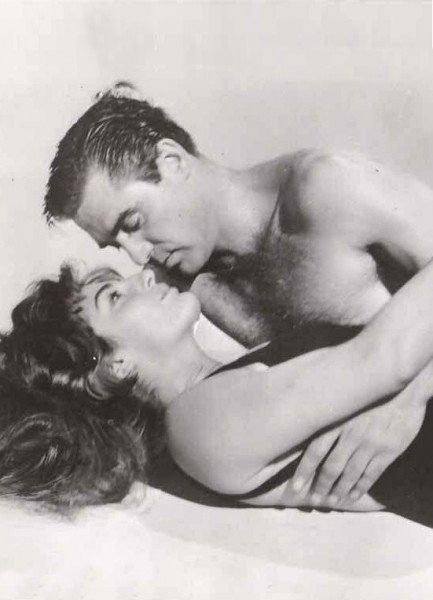 That's what I thought.
That's what I thought.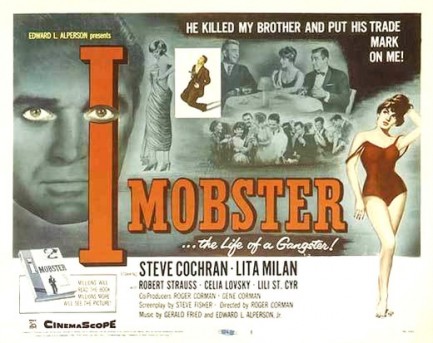
| Hollywoodland | Jan 22 2022 |

Wilkinson's tongue lures the reading public.
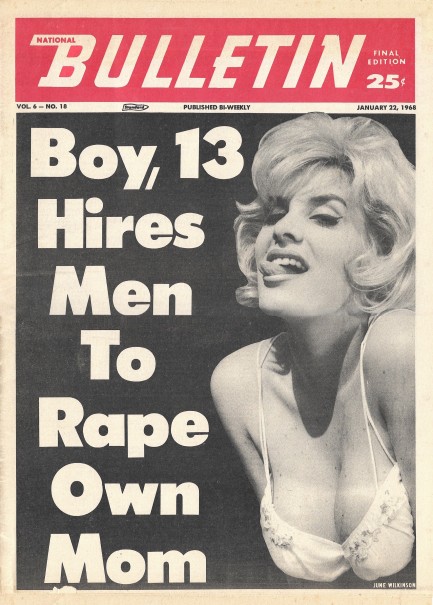
Is the tongue really the strongest muscle in the human body? Maybe or maybe not, but it's certainly powerful here. This cover of National Bulletin published today in 1968 features England born model and actress June Wilkinson, owner of Hollywood's favorite exhibitionist internal organ, making newsstand browsers have thoughts that tighten their underwear. This tongue-out look was Wilkinson's trademark. Miley Cyrus is a mere millennial copycat. Too bad the cover shot is juxtaposed against blocky text about mom rape. But remember, these tabloids were part fiction. The mom story... Well, no thirteen-year-old hired men to do that. And if you look inside, it's a cinch that no anthropologist told the tabloid public she ate—and loved!—human flesh, no random daughter confessed to needing her mom to test out her boyfriends in bed, and no abortionist charged a year of sex instead of money for his services. These are cheapie tabloids, with virtually no staff, and no scruples.
The key to making fakeness work was to write stories people wanted to believe. To aid that mission they mixed in scattered factual pieces, such as the story on serial killers, including Richard Speck. He really did rape and murder eight student nurses in one night. It's a crime that sent a collective shock through America that has never been matched, at least until the era of mass shootings arrived. But importantly, it's also so bizarre and horrible that it serves as a gateway for Bulletin stories that sound more plausible but are actually fiction. Veteran breaks kitten's neck? Woman kills husband with rolling pin? Both probably happened somewhere, sometime, but did Bulletin really employ staff to travel out to woop woop and interview these people, or pay stringers for the stories? Not a chance. But that's why we love these old tabloids. They prove that nothing is new, even in 2022. It's all been done before, just not as fast, and not as glittery. Nineteen scans below.



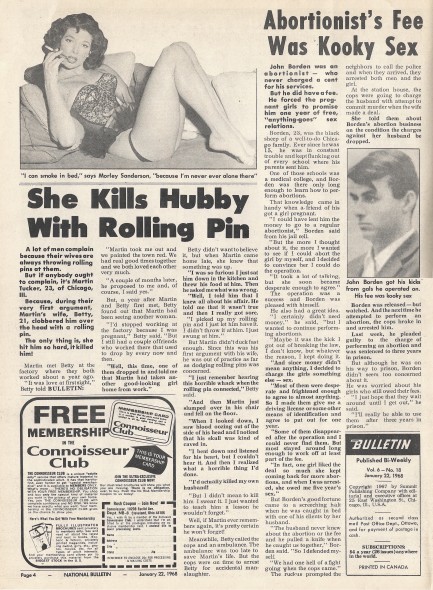

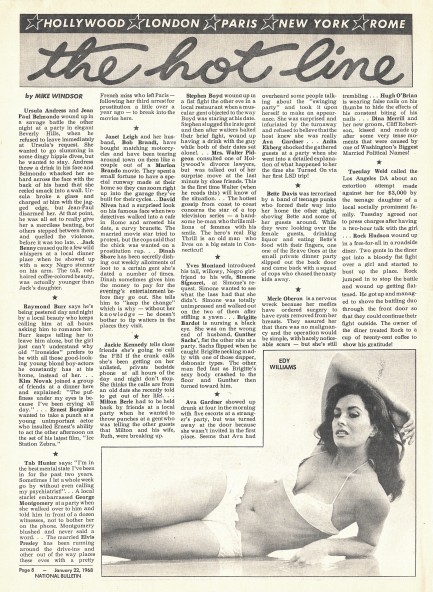

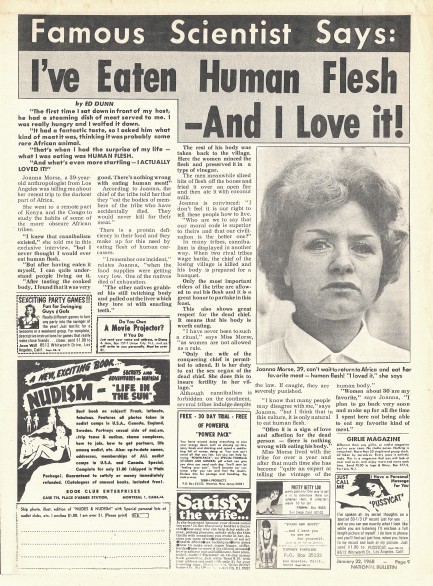










 |
 |




































































